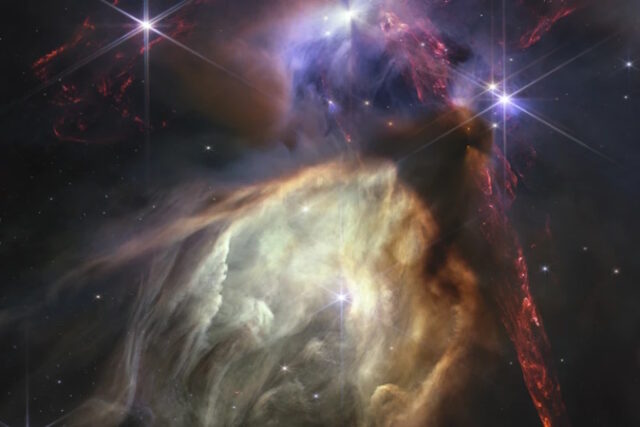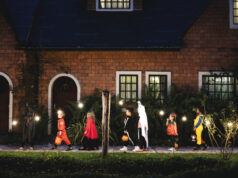
CAPE CANAVERAL, Fla. (AP) — The Webb Space Telescope is marking one year of cosmic photographs with one of its best yet: the dramatic close-up of dozens of stars at the moment of birth.
NASA unveiled the latest snapshot Wednesday, revealing 50 baby stars in a cloud complex 390 light-years away. A light-year is nearly 6 trillion miles (9.7 trillion kilometers).
The region is relatively small and quiet yet full of illuminated gases, jets of hydrogen and even dense cocoons of dust with the delicate beginnings of even more stars.
This cloud complex, known as Rho Ophiuchi, is the closest star-forming region to Earth and is found in the sky near the border of the constellations Ophiuchus and Scorpius, the serpent-bearer and scorpion. With no stars in the foreground of the photo, NASA noted, the details stand out all the more. Some of the stars display shadows indicating possible planets in the making, according to NASA.
Webb — the largest and most powerful astronomical observatory ever launched into space — has been churning out cosmic beauty shots for the past year. The first pictures from the $10 billion infrared telescope were unveiled last July, six months after its liftoff from French Guiana.
It’s considered the successor to the Hubble Space Telescope, orbiting Earth for 33 years. In a joint NASA-European Space Agency effort, Webb scans the universe from a more distant perch, 1 million miles (1.6 million kilometers) away.
Still ahead for Webb: Astronomers hope to behold the earliest stars and galaxies of the universe while scouring the cosmos for any hints of life on planets outside our solar system.
“We haven’t found one of them yet,” Smith said. “But we’re still only one year into the mission.”
The Associated Press Health and Science Department receives support from the Howard Hughes Medical Institute’s Science and Educational Media Group. The AP is solely responsible for all content.
Disclaimer
The information contained in South Florida Reporter is for general information purposes only.
The South Florida Reporter assumes no responsibility for errors or omissions in the contents of the Service.
In no event shall the South Florida Reporter be liable for any special, direct, indirect, consequential, or incidental damages or any damages whatsoever, whether in an action of contract, negligence or other tort, arising out of or in connection with the use of the Service or the contents of the Service. The Company reserves the right to make additions, deletions, or modifications to the contents of the Service at any time without prior notice.
The Company does not warrant that the Service is free of viruses or other harmful components












